- Home
- Agatha Christie
Elephants Can Remember Page 20
Elephants Can Remember Read online
Page 20
Mathew Prichard, from his Foreword to Black Coffee: ‘This Hercule Poirot murder mystery ... reads like authentic, vintage Christie. I feel sure Agatha would be proud to have written it.’
8. Peril at End House (1932)
Nick is an unusual name for a pretty young woman. And Nick Buckley has been leading an unusual life of late. First, on a treacherous Cornish hillside, the brakes on her car fail. Then, on a coastal path, a falling boulder misses her by inches. Safe in bed, she is almost crushed by a painting. Upon discovering a bullet hole in Nick’s sun hat, Hercule Poirot (who had come to Cornwall for a simple holiday with his friend Captain Hastings) decides that the girl needs his protection. At the same time, he begins to unravel the mystery of a murder that hasn’t been committed. Yet.
Times Literary Supplement: ‘Ingenious.’
9. Lord Edgware Dies (1933)
Poirot was present when the beautiful actress Jane Wilkinson bragged of her plan to ‘get rid of ’ her estranged husband. Now the monstrous man is dead. But how could Jane have stabbed Lord Edgware in his library at exactly the time she was dining with friends? And what could have been her motive, since Edgware had finally granted her a divorce? The great Belgian detective, aided by Captain Hastings, can’t help feeling that some kind of heinous stagecraft is in play. And does more murder wait in the wings?
The New York Times: ‘A most ingenious crime puzzle.’
Times Literary Supplement: ‘The whole case is a triumph of Poirot’s special qualities.’
Noted crime fiction critic Julian Symons selected Lord Edgware Dies as one of Agatha Christie’s best.
10. Murder on the Orient Express (1934)
Just after midnight, a snowstorm stops the Orient Express dead in its tracks in the middle of Yugoslavia. The luxurious train is surprisingly full for this time of year. But by morning there is one passenger less. A ‘respectable American gentleman’ lies dead in his compartment, stabbed a dozen times, his door locked from the inside... Hercule Poirot is also aboard, having arrived in the nick of time to claim a second-class compartment — and the most astounding case of his illustrious career.
Regarding chronology: Agatha Christie seems not much concerned in the course of her books with their relationship to each other. It is why the Marples and the Poirots may be ready in any order, really, with pleasure. However, the dedicated Poirotist may wish to note that the great detective is returning from ‘A little affair in Syria’ at the start of Murder on the Orient Express. It is a piece of business after this ‘little affair’ — the investigation into the death of an archaeologist’s wife — that is the subject of Murder in Mesopotamia (1936). If one wishes to delay a tad longer the pleasures of Orient Express, Murder in Mesopotamia offers no better opportunity.
Fair warning: Along these lines, it is advisable that one not read Cards on the Table (1936) prior to Orient Express, since Poirot himself casually gives away the ending to the latter novel.
Of note: Murder on the Orient Express is one of Agatha Christie’s most famous novels, owing no doubt to a combination of its romantic setting and the ingeniousness of its plot; its non-exploitative reference to the sensational kidnapping and murder of the infant son of Charles and Anne Morrow Lindbergh only two years prior; and a popular 1974 film adaptation, starring Albert Finney as Poirot — one of the few cinematic versions of a Christie work that met with the approval, however mild, of the author herself.
Dorothy L. Sayers, Sunday Times: ‘A murder mystery conceived and carried out on the finest classical lines.’
Saturday Review of Literature: ‘Hard to surpass.’
Times Literary Supplement: ‘Need it be said — the little grey cells solve once more the seemingly insoluble. Mrs Christie makes an improbable tale very real, and keeps her readers enthralled and guessing to the end.’
11. Three-Act Tragedy (1935)
The novel opens as a theatre programme, with this telling credit: ‘Illumination by HERCULE POIROT.’ Light must be shed, indeed, on the fateful dinner party staged by the famous actor Sir Charles Cartwright for thirteen guests. It will be a particularly unlucky evening for the mild-mannered Reverend Stephen Babbington, whose martini glass, sent for chemical analysis after he chokes on its contents and dies, reveals no trace of poison. Just as there is no apparent motive for his murder. The first scene in a succession of carefully staged killings, but who is the director?
The New York Times: ‘Makes for uncommonly good reading.’
12. Death in the Clouds (1935)
From seat No. 9, Hercule Poirot is almost ideally placed to observe his fellow air travelers on this short flight from Paris to London. Over to his right sits a pretty young woman, clearly infatuated with the man opposite. Ahead, in seat No. 13, is the Countess of Horbury, horribly addicted to cocaine and not doing too good a job of concealing it. Across the gangway in seat No. 8, a writer of detective fiction is being troubled by an aggressive wasp. Yes, Poirot is almost ideally placed to take it all in — except that the passenger in the seat directly behind him has slumped over in the course of the flight... dead. Murdered. By someone in Poirot’s immediate proximity. And Poirot himself must number among the suspects.
Times Literary Supplement: ‘It will be a very acute reader who does not receive a complete surprise at the end.’
13. The ABC Murders (1936)
Captain Arthur Hastings returns to narrate this account of a personal challenge made to ‘Mr Clever Poirot’ by a killer who identifies himself as ‘ABC’ and who leaves the ABC Rail Guide next to his victims — apparently intending to work through the English countryside (he has struck in Andover, Bexhill-on-Sea, and Churston) and exercise Poirot along the way. Serialized in London’s Daily Express, The ABC Murders became a cultural phenomenon as readers were invited to try to keep up with the famous Belgian detective. It is a challenge that remains fresh and thrilling to this day — and makes The ABC Murders one of the absolute must-reads of the Christie canon.
Julian Symons: ‘A masterwork of carefully concealed artifice… most stunningly original.’
Sunday Times: ‘There is no more cunning player of the murder game than Agatha Christie.’
14. Murder in Mesopotamia (1936)
Nurse Amy Leatheran had never felt the lure of the ‘mysterious East,’ but she nonetheless accepts an assignment at Hassanieh, an ancient site deep in the Iraqi desert, to care for the wife of a celebrated archaeologist. Mrs Leidner is suffering bizarre visions and nervous terror. ‘I’m afraid of being killed!’ she admits to her nurse. Her terror, unfortunately, is anything but unfounded, and Nurse Leatheran is soon enough without a patient. The world’s greatest detective happens to be in the vicinity, however: having concluded an assignment in Syria, and curious about the dig at Hassanieh, Hercule Poirot arrives in time to lead a murder investigation that will tax even his remarkable powers — and in a part of the world that has seen more than its share of misadventure and foul play.
The New York Times: ‘Smooth, highly original, and completely absorbing.’
15. Cards on the Table (1936)
‘The deduction,’ Agatha Christie writes in her Foreword to this volume, ‘must ... be entirely psychological ... because when all is said and done it is the mind of the murderer that is of supreme interest.’ There is probably no neater encapsulation of what makes Agatha Christie’s works so fresh, so fascinating, so many years after they were written. And this statement appropriately opens the novel that is regarded as Agatha Christie’s most singularly challenging mystery — it is, in fact, Hercule Poirot’s own favourite case.
Poirot is one of eight dinner guests of the flamboyant Mr Shaitana. The other invitees are Superintendent Battle of Scotland Yard (introduced in The Secret of Chimneys); Secret Service agent Colonel Race (who first appeared in The Man in the Brown Suit); Mrs Ariadne Oliver, a famous author of detective stories (introduced in Parker Pyne Investigates and who will figure in five more Poirots) — and four suspected murderers. After dinner, there will b
e a few rounds of bridge: the four investigators playing at one table; the four murder suspects at another. Mr Shaitana will sit by the fire and observe. This he does — until he is stabbed to death. The ultimate ‘closed-room murder mystery’ awaits the intrepid reader. Who is the murderer? And who will solve the crime?
Fair warning: Poirot casually reveals the solution to Murder on the Orient Express in Cards on the Table.
Daily Mail: ‘The finest murder story of her career… Mrs Christie has never been more ingenious.’
16. Murder in the Mews (1937)
In the title work in this collection of novellas, Poirot and Inspector Japp collaborate on the investigation of a suspicious suicide. The supernatural is said to play in the disappearance of top secret military plans in The Incredible Theft — an incredible claim, indeed, as Poirot will prove. The bullet that kills Gervase Chevenix-Gore shatters a mirror in Dead Man’s Mirror — just the clue Poirot needs to solve the crime. And, while basking on white Mediterranean sands, Poirot stares trouble in the face — the beautiful face of Valentine Chantry, now celebrating her fifth marriage — in Triangle at Rhodes.
Daily Mail: ‘All four tales are admirable entertainment… Mrs Christie’s solutions are unexpected and satisfying.’
17. Dumb Witness (1937)
Agatha Christie wrote this mystery for dog lovers. She was certainly one herself, dedicating the novel to her own pet. Captain Arthur Hastings, in his penultimate Poirot appearance (like Poirot, Curtain will be his last), again takes up narrative duties — along with, remarkably, the eponymous Bob, a wire-haired terrier who, upon careful inspection, declares Poirot ‘not really a doggy person.’ But Poirot is present to inquire into the natural-seeming death of Bob’s mistress, Miss Emily Arundell. Natural-seeming, except that Miss Emily had written Poirot of her suspicions that a member of her family was trying to kill her: a letter Poirot received too late — in fact, two months too late — to help. Poirot and Bob will sniff out the murderer nonetheless (and Bob will win a happy new home, with Captain Hastings who is, most decidedly, a ‘doggy person’).
Fair warning: Dumb Witness is best read after The Mysterious Affair at Styles; The Murder of Roger Ackroyd; The Mystery of the Blue Train; and Death in the Clouds — since the identity of the criminal in each is revealed in this novel.
Glasgow Herald: ‘One of Poirot’s most brilliant achievements.’
18. Death on the Nile (1937)
Among the best-loved of Agatha Christie’s novels, Death on the Nile finds Hercule Poirot again trying to enjoy a vacation — this time aboard the S.S. Karnak, steaming between the First and Second Cataracts of the Nile, with stops at sites of archaeological significance. But Poirot (who, after all, had attempted to retire years before) seems to be perennially unlucky in his choice of holidays. Newlywed Linnet Ridgeway is, in the course of the journey, shot dead in the head, and Poirot has before him a boatload of suspects — and a useful sidekick in Colonel Race of the British Secret Service.
Of note: The producers of Murder on the Orient Express released a film version, also well received (though not by Mrs Christie, who had passed away two years prior), of Death on the Nile (1978), this time casting Peter Ustinov as Poirot.
Daily Mail (of the novel): ‘Flawless.’
19. Appointment with Death (1938)
‘“I’m so sorry,” she said... “Your mother is dead, Mr Boynton.” And curiously, as though from a great distance, she watched the faces of five people to whom that announcement meant freedom...’
We have returned to the Middle East with Hercule Poirot, on our most colourful tour yet: to the Dome of the Rock, the Judean desert, the Dead Sea, and to Petra, ‘the rose-red city,’ that ancient place of heart-stopping beauty — but also of heart-stopping horror, for here sits the corpse of old Mrs Boynton, monstrous matriarch, loathed by one and all. A tiny puncture mark on her wrist is the only sign of the fatal injection that killed her. With only twenty-four hours available to solve the mystery, Hercule Poirot recalls a chance remark he’d overheard back in Jerusalem: ‘You see, don’t you, that she’s got to be killed?’
The Observer: ‘Twice as brilliant as Death on the Nile, which was entirely brilliant.’
20. Hercule Poirot’s Christmas (1938)
This novel was the author’s gift to her brother-in-law, who had complained that her stories were, for him, ‘too academic.’ What he desired was a ‘good violent murder with lots of blood.’ From the epigraph — a quotation from Macbeth — to its startling end, Agatha delivered a gift made to order.
It is Christmas Eve. The Lee family reunion, never a lively affair, is interrupted by a deafening crash and a high-pitched scream. The tyrannical head of the Lee family, Simeon, lies dead in a pool of blood, his throat slashed. Hercule Poirot is spending the holidays with his friend Colonel Johnson, the chief constable of the local village. At the Lee house he finds an atmosphere not of mourning but of mutual suspicion. Christmas with family — survive it this year with Hercule Poirot.
Fair warning: In an exchange between Poirot and Colonel Johnson, the solution of Three-Act Tragedy is revealed.
21. Sad Cypress (1940)
Beautiful, young Elinor Carlisle stands serenely in the dock, accused of the murder of Mary Gerrard, her rival in love. The evidence is damning: only Elinor had the motive, the opportunity, and the means to administer the fatal poison. Inside the hostile courtroom, one man is all that stands between Elinor and the gallows — Hercule Poirot.
Daily Mail: ‘Poirot solves another exciting case.’
Charles Osborne, Agatha Christie’ biographer: ‘One of the most real, least schematic of crime novels. It is also unusual in that it employs the device of the possible miscarriage of justice ... And it works superbly as a murder mystery.’
22. One, Two, Buckle My Shoe (1940)
‘Nineteen, twenty, my plate’s empty.’ But the reader’s plate is full indeed, as Hercule Poirot must follow a familiar nursery rhyme through a course of murder. The adventure is kicked off by the apparent suicide of a Harley Street dentist — who would also appear to have murdered one of his patients. Hercule Poirot has himself been this dentist’s patient on this very day, and suspects foul play. A shoe buckle holds the key to the mystery. But — five, six — will Poirot pick up sticks, and — seven, eight — lay them straight... before a murderer can strike again?
The New York Times: ‘A swift course of unflagging suspense leads to complete surprise.’
23. Evil Under the Sun (1941)
‘There was that about her which made every other woman on the beach seem faded and insignificant. And with equal inevitability, the eye of every male present was drawn and riveted on her.’
Including Hercule Poirot’s. She is Arlena Stuart, the famous actress, enjoying — like the famous detective — a summer holiday on Smugglers’ Island, and she will become a common enough sight, sunbathing on the hot sands. Then one azure morning her beautiful bronzed body is discovered in an isolated cove, in the shade. She is dead, strangled. And Poirot, as luckless as ever when he attempts some down-time, will learn in the course of his investigation that nearly all the guests of this exclusive resort have some connection to Arlena. But who had the capacity and the motive to kill her?
Of note: The producers of Murder on the Orient Express and Death on the Nile released a film version of Evil Under the Sun in 1982; again, as in Nile, they cast Peter Ustinov as Poirot.
Daily Telegraph: ‘Christie has never written anything better than Evil Under the Sun, which is detective story writing at its best.’
Times Literary Supplement: ‘Christie springs her secret like a land mine.’
Sunday Times: ‘Vivacious and entertaining.’
24. Five Little Pigs (1943)
A staggering bestseller upon its publication — running through 20,000 copies of its first edition — Five Little Pigs (published in the U.S. as Murder in Retrospect) concerns a murder committed sixteen years earlier. Carla Crale prevails upon Hercule Poir
ot to investigate the crime that sent her mother, Caroline, to prison for life (where she died). Caroline had been found guilty of poisoning her estranged husband, Carla’s father, Amyas Crale, the famous artist. Poirot’s investigation centers upon five suspects, still living, whom he convinces to speak to him and to record their own memories of the long-ago incident.
Brilliantly intersplicing the past and the present, memory and reality, the search for truth and ongoing attempts to thwart it, Five Little Pigs has no antecedent. Almost a decade before Akira Kurosawa’s famous film introduced the term “Rashomon effect” into the vernacular, Agatha Christie invited her readers to view a crime from multiple perspectives and to consider the vagaries of such an exercise. Fortunately, however, the great Belgian detective does not deal in vagaries — Hercule Poirot is in the business of precision, and he will reveal the identity of the true killer.
Observer: ‘Mrs Christie as usual puts a ring through the reader’s nose and leads him to one of her smashing last-minute showdowns.’
Times Literary Supplement: ‘The answer to the riddle is brilliant.’
25. The Hollow (1946)
A murder tableau staged for Poirot’s ‘amusement’ goes horribly wrong at The Hollow, the estate of Lady Lucy Angkatell, who has invited the great detective as her guest of honour. Dr John Christow was to have been ‘shot’ by his wife, Gerda, to ‘expire’ in a pool of blood-red paint. But when the shot is fired, it is deadly, and Dr. Christow’s last gasp is of a name other than his wife’s: ‘Henrietta.’ What was to have been a pleasant country weekend becomes instead one of Poirot’s most baffling cases, with the revelation of a complex web of romantic attachments among the denizens of The Hollow.

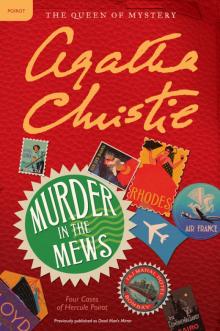 Murder in the Mews
Murder in the Mews Postern of Fate
Postern of Fate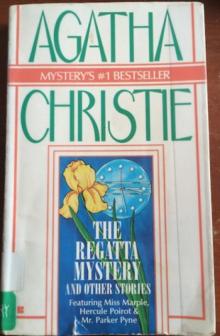 The Regatta Mystery and Other Stories
The Regatta Mystery and Other Stories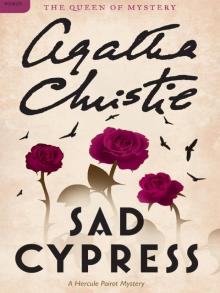 Sad Cypress
Sad Cypress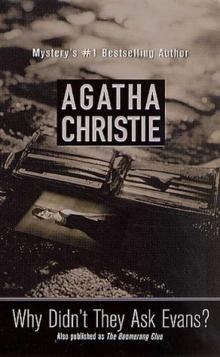 Why Didn't They Ask Evans?
Why Didn't They Ask Evans? After the Funeral
After the Funeral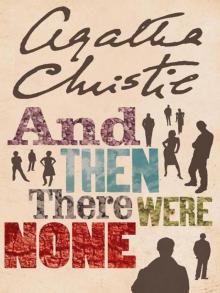 And Then There Were None
And Then There Were None The Witness for the Prosecution
The Witness for the Prosecution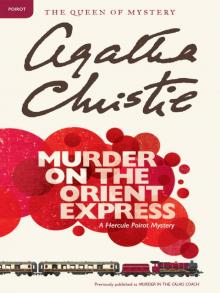 Murder on the Orient Express
Murder on the Orient Express The Seven Dials Mystery
The Seven Dials Mystery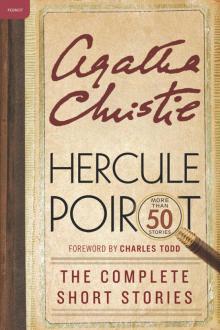 Hercule Poirot: The Complete Short Stories
Hercule Poirot: The Complete Short Stories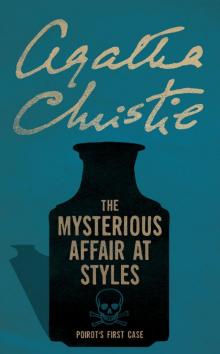 The Mysterious Affair at Styles
The Mysterious Affair at Styles Sleeping Murder
Sleeping Murder Hickory Dickory Dock
Hickory Dickory Dock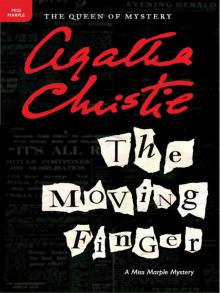 The Moving Finger
The Moving Finger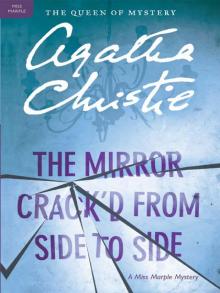 The Mirror Crack'd From Side to Side
The Mirror Crack'd From Side to Side Ordeal by Innocence
Ordeal by Innocence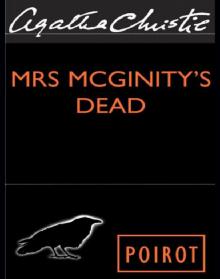 Mrs. McGinty's Dead
Mrs. McGinty's Dead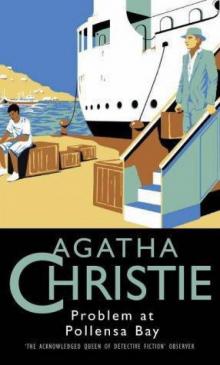 Problem at Pollensa Bay and Other Stories
Problem at Pollensa Bay and Other Stories Death Comes as the End
Death Comes as the End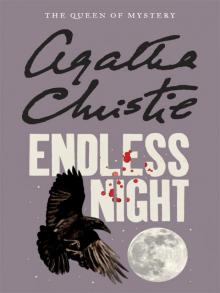 Endless Night
Endless Night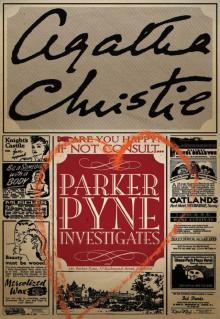 Parker Pyne Investigates
Parker Pyne Investigates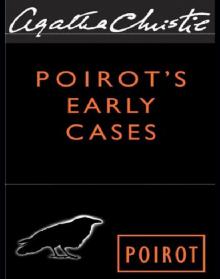 Poirot's Early Cases: 18 Hercule Poirot Mysteries
Poirot's Early Cases: 18 Hercule Poirot Mysteries Murder Is Easy
Murder Is Easy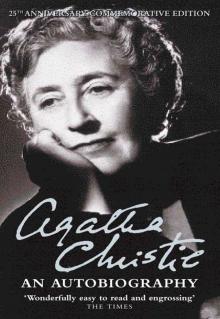 An Autobiography
An Autobiography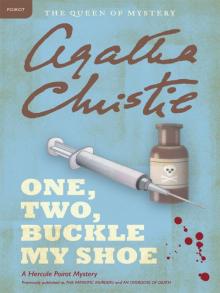 One, Two, Buckle My Shoe
One, Two, Buckle My Shoe A Pocket Full of Rye
A Pocket Full of Rye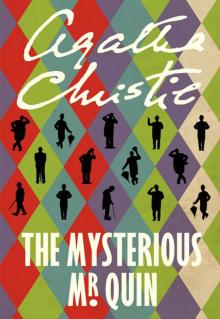 The Mysterious Mr. Quin
The Mysterious Mr. Quin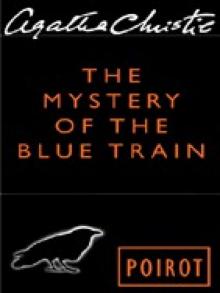 The Mystery of the Blue Train
The Mystery of the Blue Train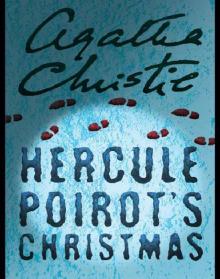 Hercule Poirot's Christmas: A Hercule Poirot Mystery
Hercule Poirot's Christmas: A Hercule Poirot Mystery Cards on the Table (SB)
Cards on the Table (SB) Three Act Tragedy
Three Act Tragedy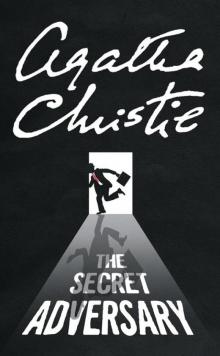 The Secret Adversary
The Secret Adversary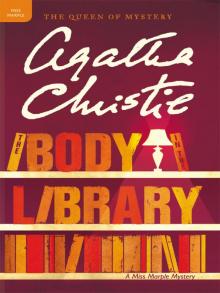 The Body in the Library
The Body in the Library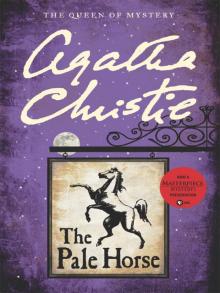 The Pale Horse
The Pale Horse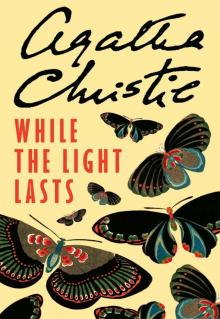 While the Light Lasts
While the Light Lasts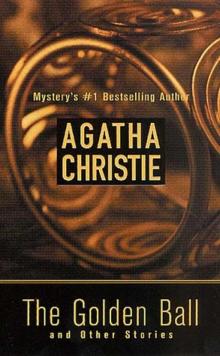 The Golden Ball and Other Stories
The Golden Ball and Other Stories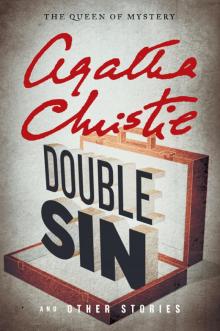 Double Sin and Other Stories
Double Sin and Other Stories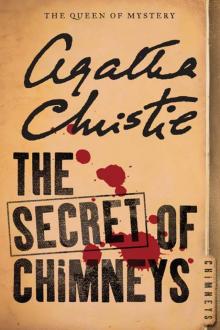 The Secret of Chimneys
The Secret of Chimneys Five Little Pigs
Five Little Pigs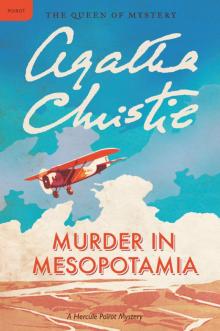 Murder in Mesopotamia: A Hercule Poirot Mystery
Murder in Mesopotamia: A Hercule Poirot Mystery The Mousetrap and Other Plays
The Mousetrap and Other Plays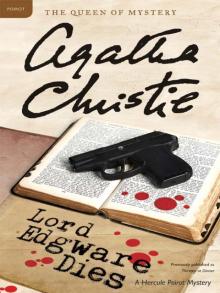 Lord Edgware Dies
Lord Edgware Dies The Hound of Death
The Hound of Death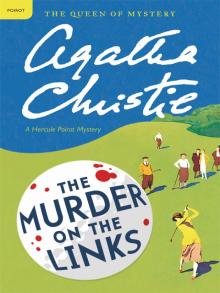 The Murder on the Links
The Murder on the Links A Caribbean Mystery
A Caribbean Mystery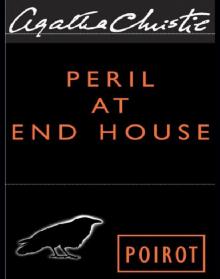 Peril at End House: A Hercule Poirot Mystery
Peril at End House: A Hercule Poirot Mystery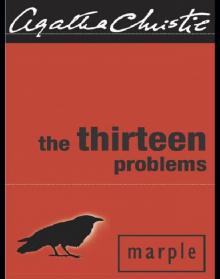 The Thirteen Problems
The Thirteen Problems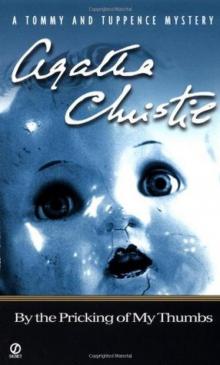 By the Pricking of My Thumbs
By the Pricking of My Thumbs Mrs McGinty's Dead / the Labours of Hercules (Agatha Christie Collected Works)
Mrs McGinty's Dead / the Labours of Hercules (Agatha Christie Collected Works)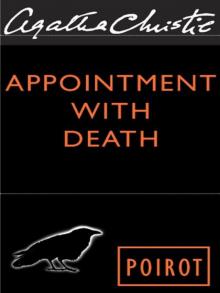 Appointment With Death
Appointment With Death Murder Is Announced
Murder Is Announced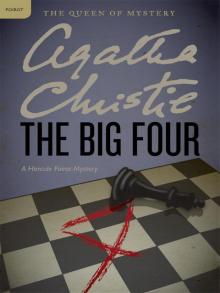 The Big Four
The Big Four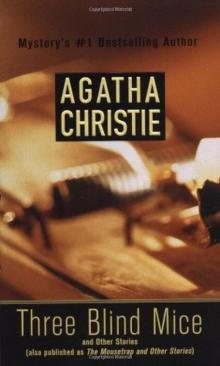 Three Blind Mice and Other Stories
Three Blind Mice and Other Stories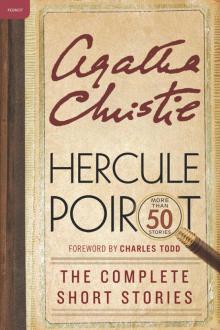 Hercule Poirot- the Complete Short Stories
Hercule Poirot- the Complete Short Stories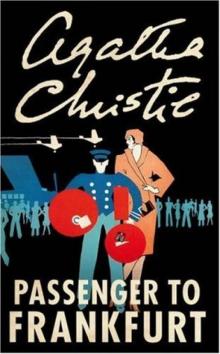 Passenger to Frankfurt
Passenger to Frankfurt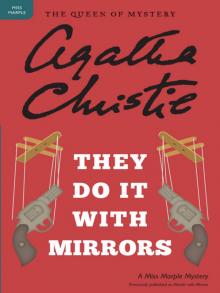 They Do It With Mirrors
They Do It With Mirrors Poirot Investigates
Poirot Investigates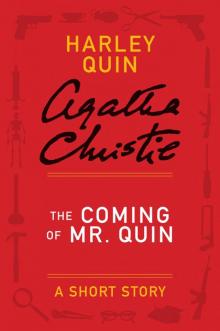 The Coming of Mr. Quin: A Short Story
The Coming of Mr. Quin: A Short Story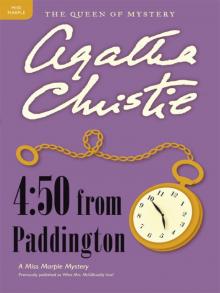 4:50 From Paddington
4:50 From Paddington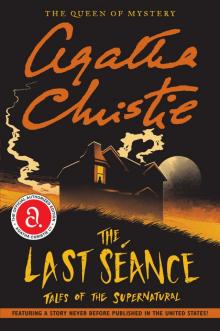 The Last Seance
The Last Seance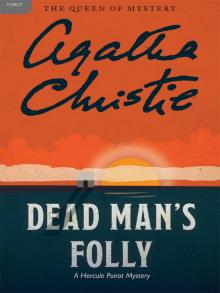 Dead Man's Folly
Dead Man's Folly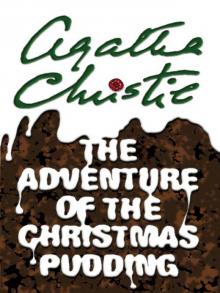 The Adventure of the Christmas Pudding
The Adventure of the Christmas Pudding The A.B.C. Murders
The A.B.C. Murders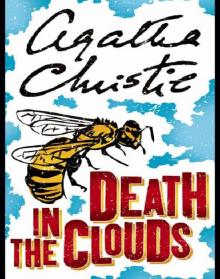 Death in the Clouds
Death in the Clouds Towards Zero
Towards Zero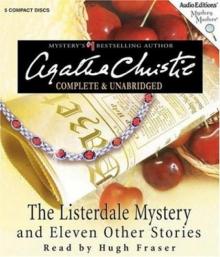 The Listerdale Mystery and Eleven Other Stories
The Listerdale Mystery and Eleven Other Stories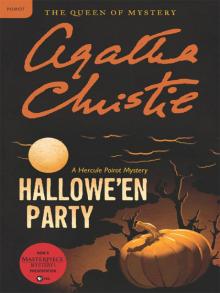 Hallowe'en Party
Hallowe'en Party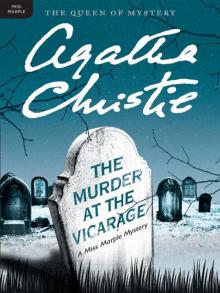 Murder at the Vicarage
Murder at the Vicarage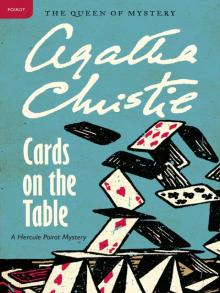 Cards on the Table
Cards on the Table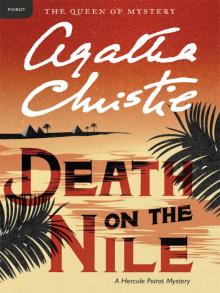 Death on the Nile
Death on the Nile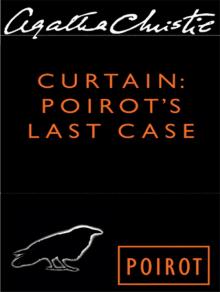 Curtain
Curtain Partners in Crime
Partners in Crime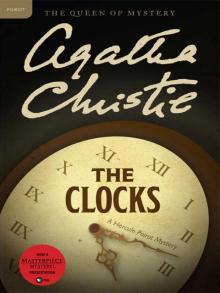 The Listerdale Mystery / the Clocks (Agatha Christie Collected Works)
The Listerdale Mystery / the Clocks (Agatha Christie Collected Works)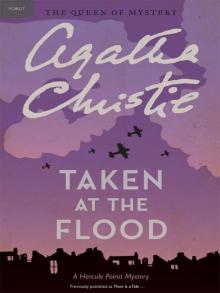 Taken at the Flood
Taken at the Flood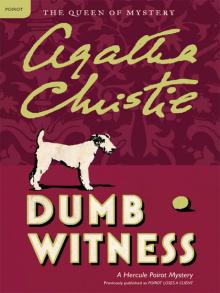 Dumb Witness
Dumb Witness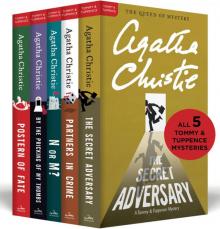 The Complete Tommy and Tuppence
The Complete Tommy and Tuppence Problem at Pollensa Bay
Problem at Pollensa Bay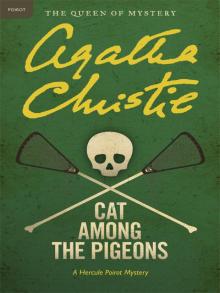 Cat Among the Pigeons
Cat Among the Pigeons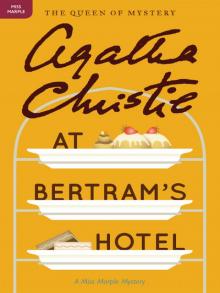 At Bertram's Hotel
At Bertram's Hotel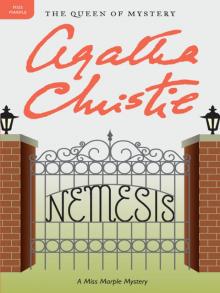 Nemesis
Nemesis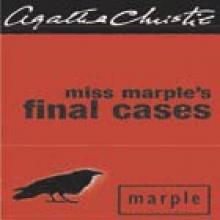 Miss Marple's Final Cases
Miss Marple's Final Cases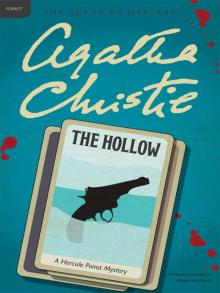 The Hollow
The Hollow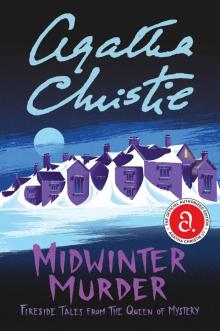 Midwinter Murder
Midwinter Murder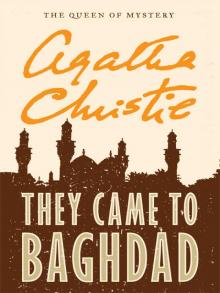 They Came to Baghdad
They Came to Baghdad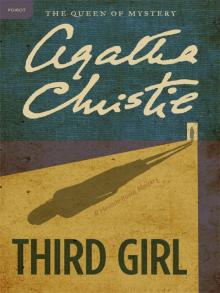 Third Girl
Third Girl Destination Unknown
Destination Unknown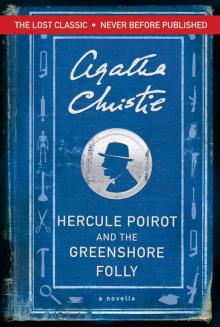 Hercule Poirot and the Greenshore Folly
Hercule Poirot and the Greenshore Folly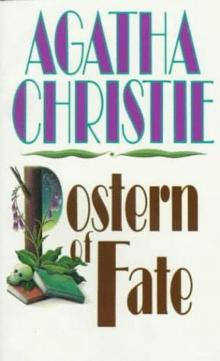 Postern of Fate tat-5
Postern of Fate tat-5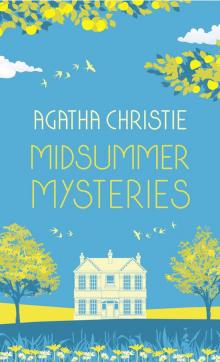 Midsummer Mysteries
Midsummer Mysteries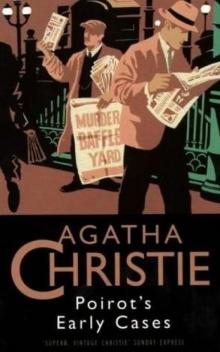 Poirot's Early Cases hp-38
Poirot's Early Cases hp-38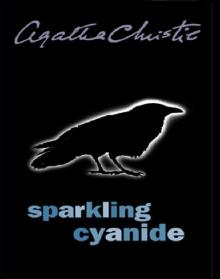 Sparkling Cyanide
Sparkling Cyanide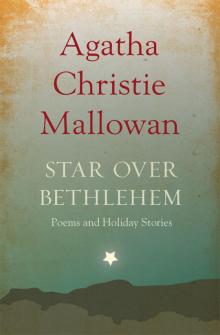 Star over Bethlehem
Star over Bethlehem Black Coffee hp-7
Black Coffee hp-7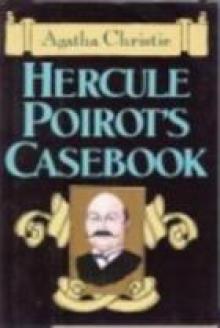 Hercule Poirot's Casebook (hercule poirot)
Hercule Poirot's Casebook (hercule poirot)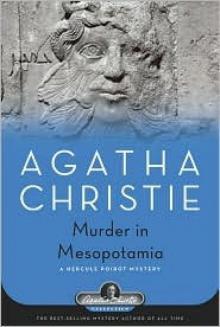 Murder in Mesopotamia hp-14
Murder in Mesopotamia hp-14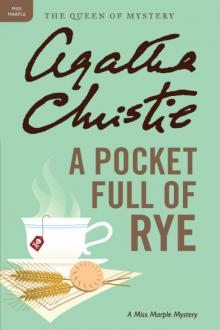 A Pocket Full of Rye: A Miss Marple Mystery (Miss Marple Mysteries)
A Pocket Full of Rye: A Miss Marple Mystery (Miss Marple Mysteries)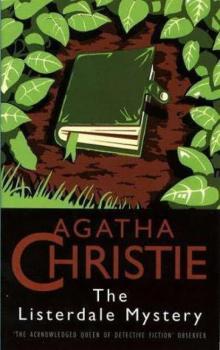 The Listerdale Mystery
The Listerdale Mystery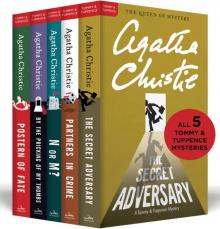 The Complete Tommy & Tuppence Collection
The Complete Tommy & Tuppence Collection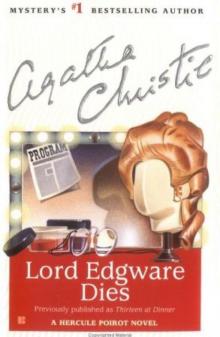 Lord Edgware Dies hp-8
Lord Edgware Dies hp-8 Death in the Clouds hp-12
Death in the Clouds hp-12 Short Stories
Short Stories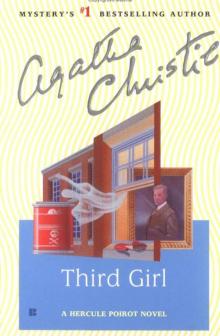 Third Girl hp-37
Third Girl hp-37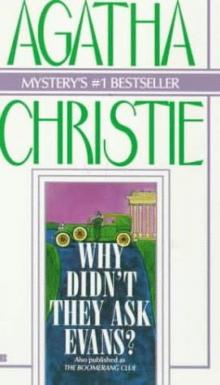 Why Didn't They Ask Evans
Why Didn't They Ask Evans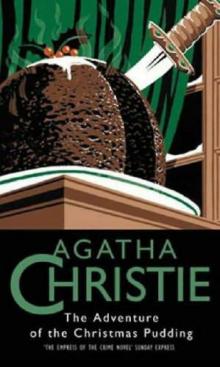 Adventure of the Christmas Pudding and other stories
Adventure of the Christmas Pudding and other stories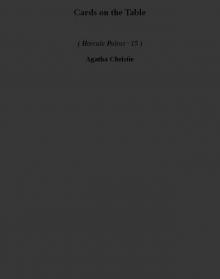 Cards on the Table hp-15
Cards on the Table hp-15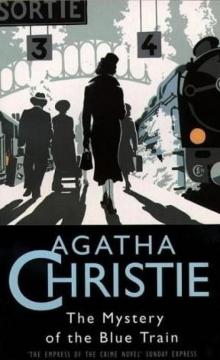 The Mystery of the Blue Train hp-6
The Mystery of the Blue Train hp-6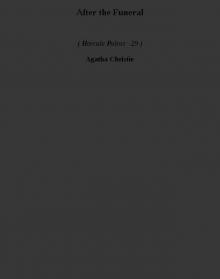 After the Funeral hp-29
After the Funeral hp-29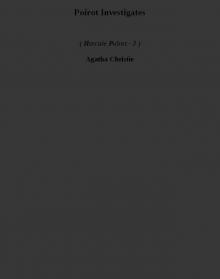 Poirot Investigates hp-3
Poirot Investigates hp-3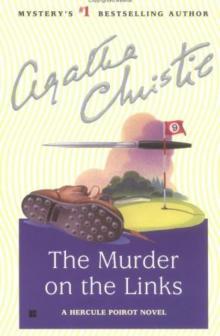 Murder on the Links hp-2
Murder on the Links hp-2 The Mysterious Mr Quin
The Mysterious Mr Quin Curtain hp-39
Curtain hp-39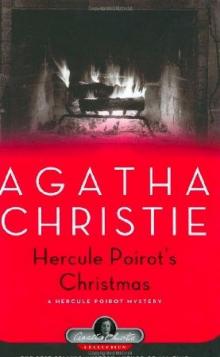 Hercule Poirot's Christmas hp-19
Hercule Poirot's Christmas hp-19 Partners in Crime tat-2
Partners in Crime tat-2 The Clocks hp-36
The Clocks hp-36 Murder, She Said
Murder, She Said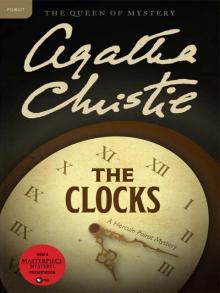 The Clocks
The Clocks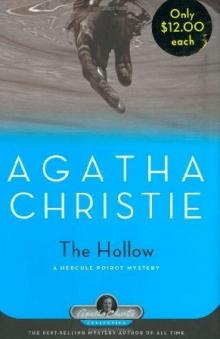 The Hollow hp-24
The Hollow hp-24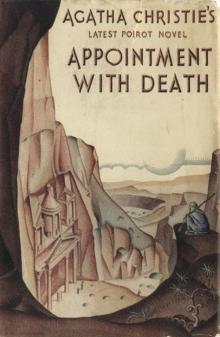 Appointment with Death hp-21
Appointment with Death hp-21 Murder in the mews hp-18
Murder in the mews hp-18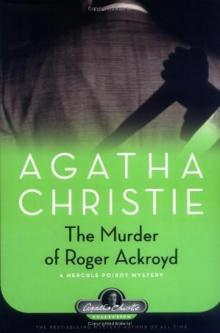 The Murder Of Roger Ackroyd hp-4
The Murder Of Roger Ackroyd hp-4 Dumb Witness hp-16
Dumb Witness hp-16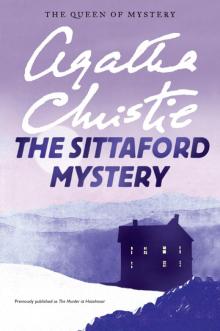 The Sittaford Mystery
The Sittaford Mystery Mrs McGinty's Dead
Mrs McGinty's Dead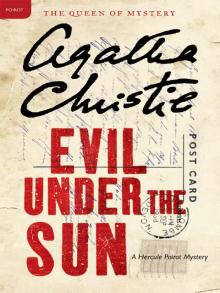 Evil Under the Sun
Evil Under the Sun The A.B.C. Murders hp-12
The A.B.C. Murders hp-12 The Murder at the Vicarage mm-1
The Murder at the Vicarage mm-1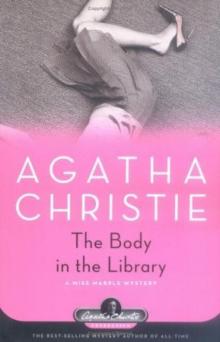 The Body in the Library mm-3
The Body in the Library mm-3 Miss Marple and Mystery
Miss Marple and Mystery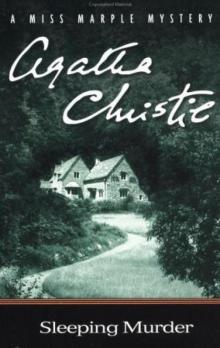 Sleeping Murder mm-14
Sleeping Murder mm-14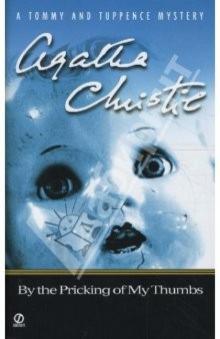 By the Pricking of My Thumbs tat-4
By the Pricking of My Thumbs tat-4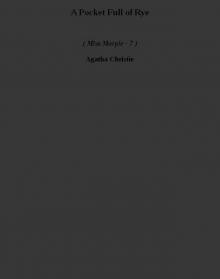 A Pocket Full of Rye mm-7
A Pocket Full of Rye mm-7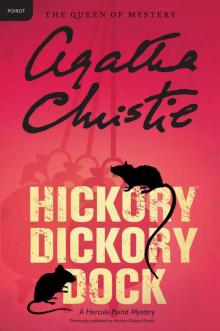 Hickory Dickory Dock: A Hercule Poirot Mystery
Hickory Dickory Dock: A Hercule Poirot Mystery The Big Four hp-5
The Big Four hp-5 The Labours of Hercules hp-26
The Labours of Hercules hp-26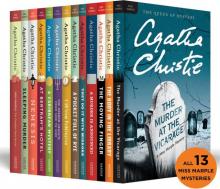 The Complete Miss Marple Collection
The Complete Miss Marple Collection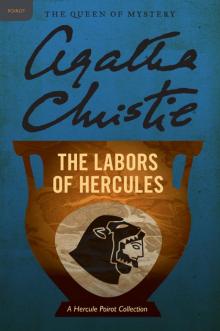 The Labours of Hercules
The Labours of Hercules 4.50 From Paddington
4.50 From Paddington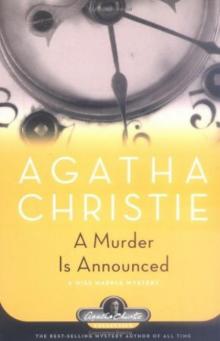 A Murder Is Announced mm-5
A Murder Is Announced mm-5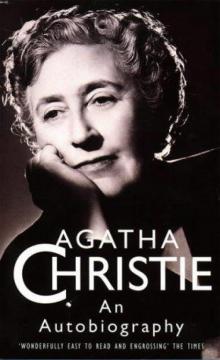 Agahta Christie: An autobiography
Agahta Christie: An autobiography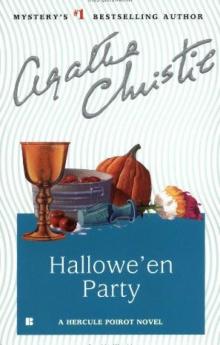 Hallowe'en Party hp-36
Hallowe'en Party hp-36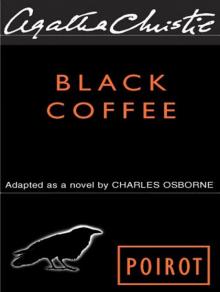 Black Coffee
Black Coffee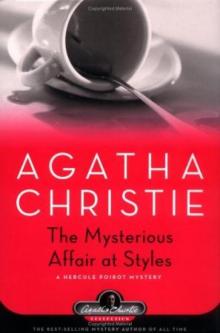 The Mysterious Affair at Styles hp-1
The Mysterious Affair at Styles hp-1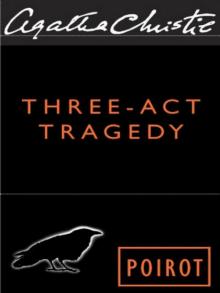 Three-Act Tragedy
Three-Act Tragedy Best detective short stories
Best detective short stories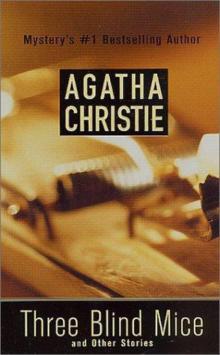 Three Blind Mice
Three Blind Mice Nemesis mm-11
Nemesis mm-11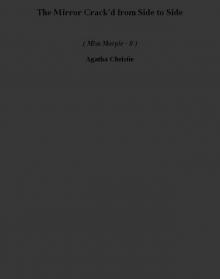 The Mirror Crack'd from Side to Side mm-8
The Mirror Crack'd from Side to Side mm-8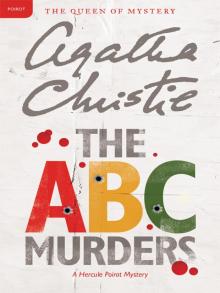 The ABC Murders
The ABC Murders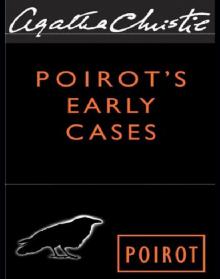 Poirot's Early Cases
Poirot's Early Cases The Unexpected Guest
The Unexpected Guest A Caribbean Mystery - Miss Marple 09
A Caribbean Mystery - Miss Marple 09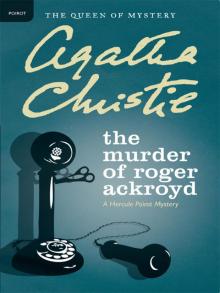 The Murder of Roger Ackroyd
The Murder of Roger Ackroyd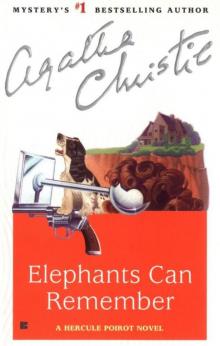 Elephants Can Remember hp-39
Elephants Can Remember hp-39 The Mirror Crack'd: from Side to Side
The Mirror Crack'd: from Side to Side Sad Cypress hp-21
Sad Cypress hp-21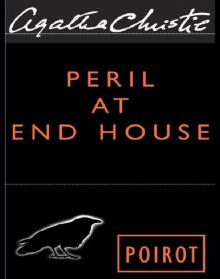 Peril at End House
Peril at End House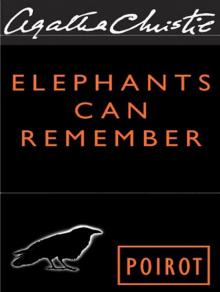 Elephants Can Remember
Elephants Can Remember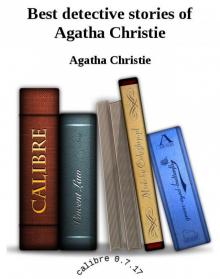 Best detective stories of Agatha Christie
Best detective stories of Agatha Christie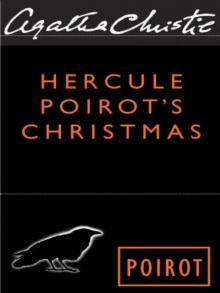 Hercule Poirot's Christmas
Hercule Poirot's Christmas The Body In The Library - Miss Marple 02
The Body In The Library - Miss Marple 02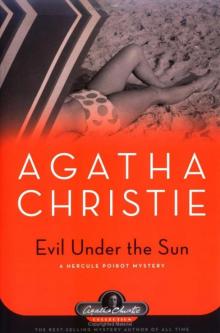 Evil Under the Sun hp-25
Evil Under the Sun hp-25 The Capture of Cerberus
The Capture of Cerberus The Hound of Death and Other Stories
The Hound of Death and Other Stories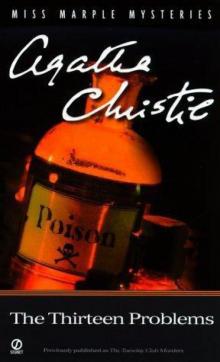 The Thirteen Problems (miss marple)
The Thirteen Problems (miss marple) The Thirteen Problems-The Tuesday Night Club
The Thirteen Problems-The Tuesday Night Club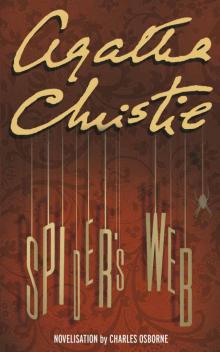 Spider's Web
Spider's Web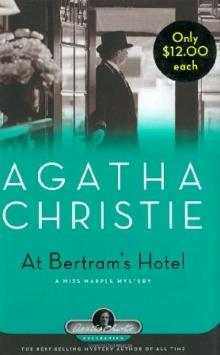 At Bertram's Hotel mm-12
At Bertram's Hotel mm-12 The Murder at the Vicarage (Agatha Christie Mysteries Collection)
The Murder at the Vicarage (Agatha Christie Mysteries Collection)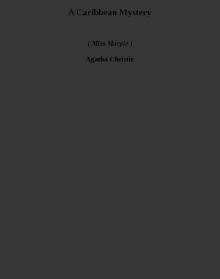 A Caribbean Mystery (miss marple)
A Caribbean Mystery (miss marple) A Murder Is Announced
A Murder Is Announced Clues to Christie
Clues to Christie The Moving Finger mm-3
The Moving Finger mm-3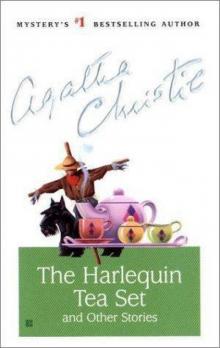 The Harlequin Tea Set and Other Stories
The Harlequin Tea Set and Other Stories Murder on the Links
Murder on the Links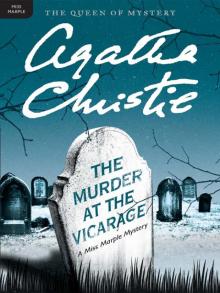 The Murder at the Vicarage
The Murder at the Vicarage N or M tat-3
N or M tat-3 The Secret Adversary tat-1
The Secret Adversary tat-1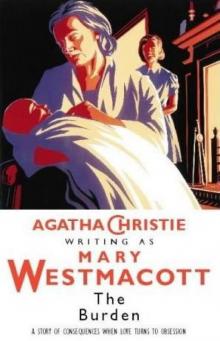 The Burden
The Burden Mrs McGinty's Dead hp-28
Mrs McGinty's Dead hp-28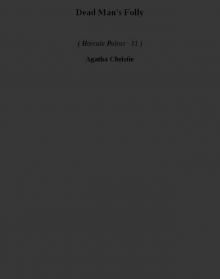 Dead Man's Folly hp-31
Dead Man's Folly hp-31 Peril at End House hp-8
Peril at End House hp-8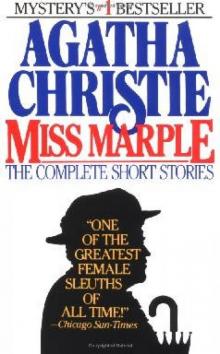 Complete Short Stories Of Miss Marple mm-16
Complete Short Stories Of Miss Marple mm-16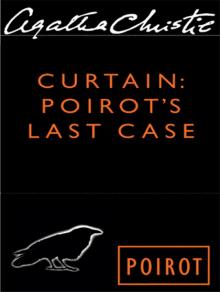 Curtain: Poirot's Last Case
Curtain: Poirot's Last Case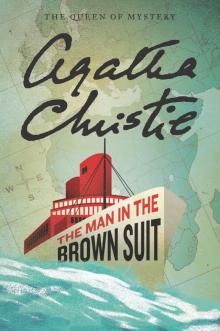 The Man in the Brown Suit
The Man in the Brown Suit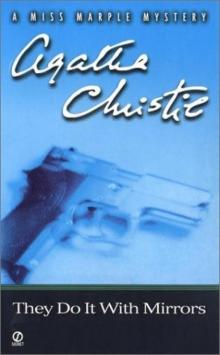 They Do It With Mirrors mm-6
They Do It With Mirrors mm-6